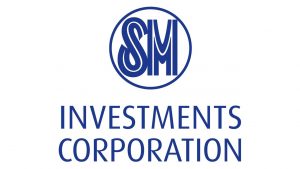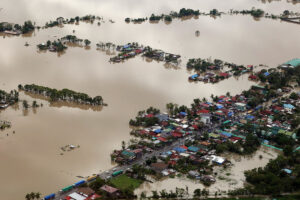BSP may deliver 50-bp hike — poll

THE BANGKO SENTRAL ng Pilipinas (BSP) is widely expected to raise benchmark interest rates at its meeting on Thursday, with some analysts forecasting a 50-basis-point (bp) increase after inflation accelerated to a fresh 14-year high in January.
A BusinessWorld poll last week showed 17 out of 18 analysts see the Monetary Board hiking its benchmark interest rate at its first meeting of the year on Feb. 16.
Nine analysts see the BSP raising borrowing costs by 50 bps, while eight analysts anticipate a 25-bp increase. Only one analyst expects the BSP to keep rates unchanged.
“January’s inflation data was a huge surprise, smashing expectations of a possible deceleration. The rise in inflation was broad-based, reflecting how entrenched current price pressures are,” ANZ Research economist Debalika Sarkar said in an e-mail.
The consumer price index (CPI) climbed 8.7% year on year in January from 8.1% in December. This was the fastest growth in 14 years or since the 9.1% logged in November 2008.
Security Bank Corp. Chief Economist Robert Dan J. Roces said the BSP is expected to respond to the latest inflation print with a “more aggressive monetary policy stance.”
“While the central bank was previously believed to be on track to increase interest rates by only 25 bps in its next meeting, we now think a 50-bp hike may be in the cards, given the potential for hot inflation to drive higher inflationary expectations,” Mr. Roces said in an e-mail.
Philippine inflation appears to be on a different trajectory from the rest of the region mainly due to food inflation, Capital Economics Senior Asia Economist Gareth Leather said.
“As is the case in many other parts of the world, an outbreak of avian flu is putting upward pressure on egg prices. But severe storms in the Philippines, which have damaged harvests, have also led to a jump in the prices of fruit and vegetables,” Mr. Leather said in a note on Friday.
Food inflation quickened to 11.2% in January from 10.6% a month ago and 1.6% in January 2022, driven mainly by higher prices of vegetables, fruits, dairy products and eggs. This was the fastest food inflation since the 11.3% in March 2009.
“Having hiked interest rates by 350 bps so far, we had originally penciled in a 25-bp increase for the central bank’s meeting on Thursday. But the unwelcome increase in inflation last month along with BSP’s hawkish comments have prompted us to change this to a 50-bp increase,” Mr. Leather said.
‘PERSISTENT’Persistent core inflation is another concern for economists.
Core inflation, which discounts food and fuel volatile prices, jumped to 7.4% in January from 6.9% in December and 1.8% in the same month in 2022. This is the fastest core inflation since 8.2% in December 2000.
“This suggests that the underlying drivers of inflation may be moving away from a transitory nature, and rather the result of more persistent factors such as an unsolved food supply problem which drives up costs and bleeding into the core,” Mr. Roces said.
He noted the BSP should take a proactive stance “in controlling inflation and anchoring inflation expectations to prevent the economy from spiraling out of control.”
UnionBank of the Philippines, Inc. Chief Economist Ruben Carlo O. Asuncion said faster January inflation confirmed his observation that consumer demand remains resilient, particularly among the middle- and upper-income households.
“Whether this is still due to pent-up demand, dissavings and access to consumer credit, or some combination, producers/distributors are seemingly still confident to pass on the costs to consumers… Since there seems to be limited consumer pushback to ongoing pass-through dynamics, BSP may be left with no choice but to settle for a more hawkish push for its terminal policy rate to be signaled starting this month,” Mr. Asuncion said.
If rates are hiked by 50 bps on Thursday, he noted the BSP “will disengage from the Fed and raise the risk of a terminal rate exceeding 6% especially if faster disinflation in succeeding months is nowhere to be seen.”
On the other hand, China Banking Corp. Chief Economist Domini S. Velasquez expects the BSP to raise interest rates by 25 bps this week.
“Our projections show that inflation is on a downward trend, albeit from a higher base given January’s 8.7% print. Supply-side issues remain to be the major driver of inflation and non-monetary measures are urgently needed to bring food prices down,” she said.
Starting February, Ms. Velasquez said the BSP is expected to slow tightening as the full impact of last year’s rate hikes have yet to be felt.
Ms. Sarkar said the BSP would have to cap inflation expectations.
“This backdrop clearly points to an extended rate hike cycle that now threatens to extend into second quarter of 2023. Our revised policy rate forecast for 2023 signals two more hikes of 25 bps each at the March and May meetings, taking the terminal rate to 6.50%,” she said.
The Monetary Board might also revise its full-year inflation forecast upward, she added.
The BSP sees inflation averaging 4.5% this year before easing to 2.8% in 2024.
“On the plus side, the peso has stabilized at a stronger level compared to late last year, which will help quell imported inflation,” Oxford Economics Assistant Economist Makoto Tsuchiya said in an e-mail.
The peso rebounded back to the P54 a dollar from its record-low of P59 in October. The local unit closed at P54.42 a dollar on Friday, strengthening by three centavos from its previous close.
“Our baseline currently assumes 25-bp rate hike at each of February and March meeting. However, depending on the magnitude of rate hike next week, there is a scope for the BSP to tighten further than we currently anticipate,” Mr. Tsuchiya said.
Miguel Chanco, chief emerging Asia economist at Pantheon Macroeconomics, said the BSP is dealing with inflation that is mainly driven by supply shortages, in which rate hikes are unlikely to help directly.
“Our long-term term view for rates this year includes the potential for a rollback of the rate hikes enacted, most likely in the fourth quarter, when inflation returns more comfortably to the target range and when the growth picture is likely to be much less robust,” he added.
Meanwhile, Philippine National Bank economist Alvin Joseph A. Arogo said the BSP will continue to mirror the US Federal Reserve’s tightening this year.
The US Fed slowed its pace of policy tightening earlier this month, raising interest rates by just 25 bps. The Fed has so far delivered 450 since March 2022, bringing its key rate to a range of 4.5-4.75%.
“Since the Fed is on track to hike by a total of 75 bps this year, PNB Research’s forecast is for the policy rate to reach 6.25% in 2023. Given the elevated inflation rate for the most part of 2023, our baseline view is that a rate cut is most likely only in 2024,” Mr. Arogo said.
After Thursday, the Monetary Board’s next policy review is set on March 23. — Keisha B. Ta-asan




